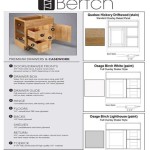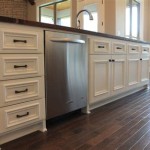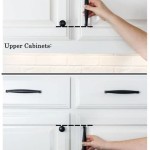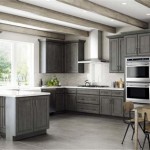Adjusting Hinges On Kitchen Cabinets: Essential Aspects
Adjusting hinges on kitchen cabinets is a crucial task in maintaining the functionality and aesthetics of your kitchen. Proper alignment and operation of the hinges ensure that the doors open and close smoothly, without sagging or binding. Understanding the essential aspects of hinge adjustment empowers you to address common issues and preserve the longevity of your kitchen cabinets.
Before delving into the specifics of hinge adjustment, it's essential to grasp the part of speech of the keyword: "Adjusting Hinges on Kitchen Cabinets." The term "Adjusting" denotes a verb, indicating an action performed on the object "Hinges" within the context of "Kitchen Cabinets." This understanding guides the subsequent content structure, emphasizing the active adjustment processes related to kitchen cabinet hinges.
1. Types of Hinges and Adjustments
Various types of hinges are used in kitchen cabinets, each with unique adjustment mechanisms. Understanding the hinge type is paramount for proper adjustment. Common hinge types include concealed hinges, semi-concealed hinges, and butt hinges. Each type requires specific adjustment procedures using dedicated screws or fittings.
2. Vertical and Horizontal Alignment
Vertical and horizontal alignment are critical aspects of hinge adjustment. Vertical alignment ensures that the door hangs evenly from top to bottom, while horizontal alignment ensures that the door is centered within the cabinet opening. Adjustments can be made by adjusting the screws labeled "Up/Down" and "Left/Right" respectively.
3. Depth Adjustment
Depth adjustment determines the distance between the door and the cabinet frame. Proper depth adjustment prevents the door from rubbing against the frame or protruding excessively. Adjustment is typically made using a screw labeled "In/Out" or "Depth."
4. Tension Adjustment
Tension adjustment controls the amount of resistance when opening or closing the door. Loose hinges can cause doors to sag, while excessively tight hinges can make them difficult to operate. Tension is adjusted using a screw labeled "Tension" or "Spring."
5. Over-travel and Under-travel
Over-travel and under-travel refer to the extent to which the door opens or closes beyond the optimal range. Over-travel can cause the door to hit the adjacent cabinet or wall, while under-travel prevents the door from opening or closing fully. Adjustments are typically made using dedicated screws or fittings.
Conclusion
Adjusting hinges on kitchen cabinets involves understanding the different types of hinges, alignment, depth, tension, and travel adjustments. By addressing these essential aspects, you can ensure that your kitchen cabinet doors operate smoothly, without any issues. Remember to consult your specific hinge instructions or refer to professional assistance for more complex adjustments.

Adjusting Cabinet Hinges The Diy Life

How To Adjust Hinges The Right Way Hestia Hearth Design Burlington

How To Adjust Your Kitchen Cupboard Doors Made Easy

Hinge Adjustments Trends Kitchens

How To Adjust Your Kitchen Cabinet Hinges Solid Wood Cabinets Information Guides

How To Adjust Kitchen Cupboard Hinges The Big Idea

How To Adjust 3 Hinges Align Cabinet Doors

How To Adjust Your Cabinet Door Hinges Properly

How To Adjust Your Kitchen Cabinet Hinges Solid Wood Cabinets Information Guides

How To Adjust A Door That Rubs Doesn T Shut Or Is Sagging
Related Posts








